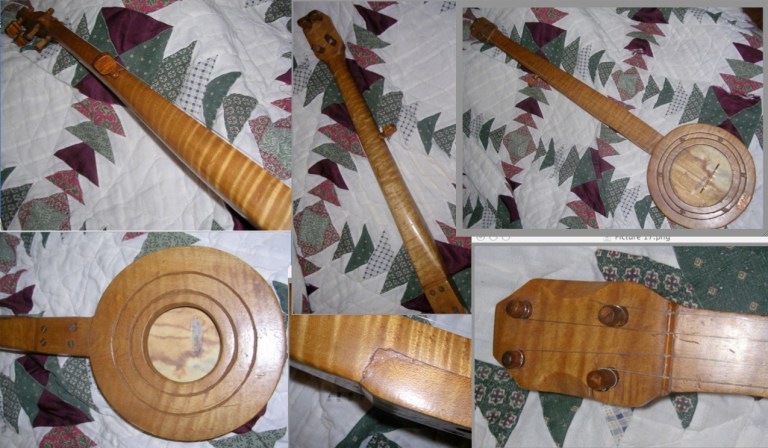Mountain banjer exemplars
The documented history of the mountain banjer is sparse due to its humble, rural regional distribution but there are numerous diverse examples extant which bear the stamp of age and authenticity, though they may not date earlier than the early 20th century. Some come with family histories, others without, but all can serve as examples and confirmation of a strong tradition. The range of individual solutions to construction within the constraints of a perhaps hypothetical model are instructive, stimulating, and are witness to a flourishing, mature style.

In 1924, during a two-year tour of western North Carolina, the folklorist Robert Winslow Gordon of the Library of Congress took numerous photographs, of which only a few survive; luckily for us they include these mountain banjers.


At the 2011 Banjo Gathering, an annual meeting of scholars and collectors, there was an unprecedented showing of early mountain banjers.






William M. Plummer (1873-1943) was an African American inventor and craftsman from Jeffersonville, VA, who built at least one mountain banjer. https://en.wikipedia.org/wiki/William_Plummer

In 2014 The Antiques Roadshow featured an octagonal folk art banjer with an inlaid, faceted neck, made in the “early 1900s” and gifted to the woman’s grandfather in 1920. It is a tour de force of a woodworker’s craft. https://www.youtube.com/watch?v=qz9Z2wXYlPg



The Museum of Appalachia, in Norris, just north of Knoxville TN, has a good collection of musical instruments, including mountain banjers, which used to appear on their website but, of late, are missing. Fortunately I took screen shots of the more interesting ones.












Over the years other old mountain-style banjers have shown up on scholarly groups and auction sites like eBay; I document what I can and I thank all those who have shared their knowledge and acquisitions. Most are undocumented, though there are notable exceptions.































